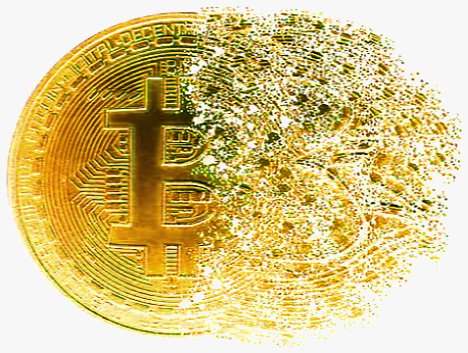Accredited InvestorsAltcoinAnatoli UnitskyAnti-Money Laundering (AML) In CryptoAPIArbitrageArtCoin TokenArticle DirectoryASICAuction Terminology GlossaryBasics of Stock Market InvestingBear MarketBest Crypto Payment Provider In the WorldBitcoinBlockchainBlockchain ConfirmationBlockchain Consensus MechanismBlockchain ForkBlockchain GlossaryBored Ape Yacht ClubBuild a Business That OutperformsBull MarketBuying SkyWay SharesByzantine Fault Tolerance (BFT) ExplainedCasascius CoinCentral Bank Digital Currency (CBDC)Centralized Crypto ExchangeCoinCoinsetCold WalletCollateralCommodity Futures Trading Commission (CFTC)Cross-Chain TechnologyCRUCrypto ExchangeCrypto GlossaryCrypto JokesCrypto Terms to KnowCrypto TickerCryptocurrencyCryptographyCryptojackingCryptounit BlockchainCryptounit GlossaryCryptounit ProgramdApp (Decentralized Application)Dead CoinDecentralized Exchange (DEX)Decentralized Finance (DeFi)Difference Between Bitcoin and EthereumDifferent Ways of Investing MoneyDigital CurrencyDistributed LedgerDo Your Own Research (DYOR)Dollar Cost Averaging (DCA)Dow Jones Industrial Average (DJIA)EncryptionERC-20ERC-721EthereumEvoScentFear Of Missing Out (FOMO)Fear, Uncertainty and Doubt (FUD)Fiat MoneyFNT Fintech CompanyGenesis BlockGlobal Unit PayGlossary of Banking TermsGlossary of Business TermsGlossary of Financial TermsHalvingHODLHot WalletHow Do I Start InvestingHow Rich is Satoshi Nakamoto?How to Create a BlockchainHow to Find Private InvestorsHow to Get Into FintechHow to Program Smart ContractsI Am Thrilled to Be a Part of This Global ProjectInitial Coin Offering (ICO)Initial Public Offering (IPO)Initial Token Offering (ITO)Innovation Basalt TechnologyInnovative Transportation TechnologiesInternational Bank Account Number (IBAN)Investing in Gold Mining StocksInvesting in Gold MiningJagerJoy of Missing Out (JOMO)Know Your Customer (KYC)LedgerLiquidity in CryptocurrencyMaker and Taker Fees in Crypto TradingMarket Capitalization (Market Cap)Meme CoinMetal Credit CardMetaMaskMillenials Now Have Access to Generational WealthMy Best Investment EverNew Digital EvolutionNFT GlossaryOff-Chain TransactionsOn-Chain TransactionsOpen Edition NFTPeer-to-Peer (P2P)Personal Loan GlossaryProbably the Best STO on the MarketProof of Stake (PoS)Real Estate Glossary of TermsReal Estate Investing GlossaryRebase TokenSecurities and Exchange Commission (SEC)Security Token ExchangesSecurity Token Offering (STO)Soulbound Decentralized Identities for Security TokensSoulbound ID Launch by Stobox Proves a SuccessSoulbound TokensStoboxStock Market GlossaryTestimonialsTether Platform and Token (USDT)UnitEx ExchangeUnitsky String TechnologiesUNTBUSDUValidatorWe Started Investing When We Were 25What are Blue Chip NFT?What are Blue Chip Stocks?What are Crypto Assets?What are Crypto Smart Contracts?What are CryptoPunks NFT?What are Digital Assets?What are Digital Collectibles?What are Gas Fees?What are Gas Wars?What are Hashmasks?What are Non Fungible Tokens?What are Non-Sufficient Funds (NSF)?What are Soulbound Tokens (SBT)?What are Stablecoins in Crypto?What are Transactions Per Second (TPS)?What are Utility NFTs?What are Utility Tokens?What Does Burning Crypto Mean?What Does Diamond Hands Mean?What Does Paper Hands Mean?What Does To The Moon Mean?What Does WAGMI Mean?What Happened to Satoshi Nakamoto?What is a 51% Attack?What is a Baby Boomer?What is a Backlink?What is a Banner?What is a Barcode?What is a Bid-Ask Spread in Crypto?What is a Block in Blockchain?What is a Block Reward?What is a Blockchain Address?What is a Blockchain Node?What is a Blockchain Oracle?What is a Blog?What is a Bond?What is a Bot?What is a Broker?What is a Business Accelerator?What is a Cash Cow?What is a Commercial Bank?What is a Commodity?What is a Con?What is a Credit?What is a Credit Limit?What is a Credit Rating?What is a Crypto Airdrop?What is a Crypto Bridge?What is a Crypto Scam?What is a Crypto Token?What is a Crypto Wallet?What is a Crypto Whale?What is a Crypto Winter?What is a Cryptocurrency Public Ledger?What is a Cryptocurrency Roadmap?What is a DAO?What is a Dark Pool?What is a Day Trader?What is a Dead Cat Bounce?What is a Default?What is a Derivative?What is a Digital Credit Card?What is a Fiscal Quarter?What is a Fungible Token?What is a Governance Token?What is a Grace Period?What is a Hard Fork?What is a Hot Wallet?What is a Hybrid Blockchain?What is a Hybrid PoW/PoS?What is a Joint Account?What is a Market Cap?What is a Merkle Tree in Blockchain?What is a Mining Farm?What is a Nonce? What is a PFP NFT?What is a POS System?What is a Prepaid Card?What is a Private Blockchain?What is a Private Key?What is a Public Blockchain?What is a Public Key?What is a Reserve Currency?What is a Ring Signature?What is a Routing Number?What is a Rug Pull in Crypto?What is a Safe Deposit Box?What is a Satoshi?What is a Security Token?What is a Seed Phrase?What is a Shitcoin?What is a Sidechain?What is a Soft Fork?What is a Spot Market?What is a State Bank?What is a SWIFT Code?What is a Tax Identification Number (TIN)?What is a Time Deposit?What is a Transaction Account?What is a Variable Interest Rate?What is a Virtual Assistant (VA)?What is a Virtual Card?What is a Virtual Currency?What is a Visa Card?What is a Whitelist in Crypto?What is a Whitepaper?What is Accounts Payable (AP)?What is AMA in Crypto?What is Amortization?What is an Accrual?What is an ACH Transfer?What is an Actuary?What is an Addendum?What is an Algorithm?What is an Angel Investor?What is an Annuity?What is an Asset?What is an ATM?What is an Atomic Swap?What is an Audit?What is an Avatar?What is an EIN?What is an Embargo?What is an Entrepreneur?What is an IDO (Initial Dex Offering)?What is an Interest Rate?What is an Internet cookie?What is an Investment Bank?What is an NFT Drop?What is an NFT Floor Price?What is an Ommer Block?What is an Orphan Block?What is an Outstanding Check?What is an Overdraft?What is Artificial Intelligence (AI)?What is B2B (Business-to-Business)?What is B2G (Business-to-Government)?What is Bartering?What is Bitcoin Dominance?What is Bitcoin Pizza Day?What is Blockchain Immutability?What is Blockchain Used For?What is BRICS?What is Business-to-Consumer (B2C)?What is C2C (Customer to Customer)?What is Capitalism?What is Catfishing?What is CFD Trading?What is Check Kiting?What is Cloud Mining?What is Communism?What is Content Marketing?What is Decentralization in Blockchain?What is DeFi in Crypto?What is Delisting?What is Depreciation?What is Digital Marketing?What is Diversification?What is Double Spending?What is Dumb Money?What is Dumping?What is Earnings Per Share (EPS)?What is Economics?What is Email Marketing?What is Equity?What is Etherscan?What is Fintech?What is Foreign currency?What is Forex?What is Fundamental Analysis (FA)?What is GameFi?What is Generative Art NFT?What is Gwei?What is Hard Currency?What is Hash Rate?What is Hashing in Blockchain?What is Inflation?What is Initial Game Offering (IGO)?What is Interest?What is Interest Income?What is Mainnet?What is Mastercard?What is Metaverse in Crypto?What is Mining in Cryptocurrency?What is Minting NFT?What is Mobile Banking?What is Money Laundering?What is NFT Alpha?What is NFT Metadata?What is NFT Rarity?What is NGMI Meaning?What is Nominal Interest Rate?What is Online Banking?What is Open-End Credit?What is OpenSea NFT Marketplace?What is Personal Identification Number (PIN)?What is Play-to-Earn?What is Polygon?What is Proof of Authority (PoA)?What is Proof of Work (PoW)?What is Public Key Cryptography?What is Pump and Dump?What is Quantum Computing?What is Refinancing?What is Retail Banking?What is Ripple?What is Sharding?What is Slippage in Crypto?What is Smart Money?What is Solvency?What is Soulbound ID?What is SSL?What is Staking in Cryptocurrency?What is Technical Analysis (TA)?What is Testnet?What is the Ask Price?What is the Better Business Bureau (BBB)?What is the Bid Price?What is the Dark Web?What is the InterPlanetary File System (IPFS)?What is the Gold Standard?What is the Lightning Network?What is the Prime Rate?What is the Sandbox?What is the Secondary Market?What is the World Bank?What is Tier 1 Capital?What is Tokenomics?What is TRC-20?What is Universal Banking?What is Unspent Transaction Output (UTXO)?What is Usury?What is Volatility in Crypto?What is Wash Trading?What is Web3?What is Whisper?What is XRP?What is Zero-Knowledge Proof (ZKP)?Who is Beeple?Who is Satoshi Nakamoto?Who is Vitalik Buterin?Why Tokenization is a Safe HavenWhy You Should Try Your Hand at Trading
What is a Satoshi?
- Home
- Crypto Glossary
- What is a Satoshi?
Just as traditional currencies, such as the USD, can be divided into smaller units, such as cents, cryptocurrencies also have these smaller divisions. For Bitcoin, the smallest unit is referred to as a Satoshi.

What is a Satoshi?
Satoshi is the smallest unit of Bitcoin, the world's first decentralized digital currency. It is named after the pseudonymous creator of Bitcoin, Satoshi Nakamoto. One Satoshi is equivalent to 0.00000001 Bitcoin and is often used to represent small amounts of Bitcoin.
Bitcoin was created in 2009 as a decentralized alternative to traditional currency. Unlike traditional currencies, Bitcoin operates on a peer-to-peer network and enables users to transfer money directly without the need for intermediaries like banks. Bitcoin is unique in that it operates on a decentralized ledger called the blockchain, which records every transaction in a secure and transparent manner.
Satoshi allows Bitcoin to be divided into small, precise amounts, making it easier for users to transact small amounts of Bitcoin. For example, instead of sending 0.001 Bitcoin, a user can send 100,000 Satoshi, which is the equivalent of 0.00100000 Bitcoin. This makes Bitcoin transactions more flexible and accessible to a wider range of users, including those who only wish to send small amounts of money.
The term Satoshi has also become widely used in the cryptocurrency community to refer to small amounts of any cryptocurrency. This usage of the term has helped to establish Satoshi as a standard unit of measurement for digital currencies.
History of Satoshi
The primary concern for those studying blockchain and cryptocurrencies is always the origin.
To understand Satoshi in Bitcoin, one must first be familiar with the beginning of Bitcoin. Bitcoin, the first cryptocurrency, appeared in 2008 (the currency began use in 2009, when its implementation was released as open-source software, but the word "bitcoin" was defined in a white paper published on October 31, 2008) and was created by Satoshi Nakamoto (a pseudonym).
Satoshi released a whitepaper detailing the technical aspects of a peer-to-peer electronic cash system to solve the issue of double-spending in digital transactions.
Double-spending occurs when the same digital currency is spent more than once in multiple transactions, leading to a problem with the currency being used twice. This is a flaw specific to digital currencies, as it can cause issues when multiple transactions with the same input are broadcasted on the network.
Previous digital currency projects failed, but Bitcoin came with a proof of concept and gradually gained popularity. Before exploring further the identity of Satoshi, it is important to know about the famous incident involving Bitcoin: 10,000 BTC was used to purchase two pizzas in 2010.
Today, 10,000 BTC would be worth millions, but at the time it was simply a reflection of Bitcoin's growing popularity. The rise of Bitcoin also led to the development of alternative cryptocurrencies. Satoshi remains anonymous and uses the pseudonym Nakamoto. The creator made Bitcoin divisible up to 100 million units, referred to as "coins," without naming the smaller units.
The name "Satoshi" for a unit of Bitcoin was first mentioned on the BitcoinTalk forum by ribuck on November 15, 2010. The term was originally intended to refer to one-hundredth of a Bitcoin but was later changed to one-hundred-millionth. The idea was widely accepted and has since become the standard terminology.
Using Satoshi
The definition of Satoshi raises questions about its usage, particularly due to the increasing popularity of Bitcoin. Satoshi, as a unit of measurement, has received a lot of attention. It can be compared to the division of stocks in a valuable company on the stock exchange.
Dividing stocks into multiple shares can increase the value of individual shares. It's important to note the psychological impact of presenting a smaller unit of Bitcoin, although users may choose popular altcoins instead. Satoshi provides a user-friendly name for transactions and solves the problem.
Using Satoshi as the smallest unit of Bitcoin provides useful benefits. Fractions of Bitcoin can be used for small transactions, such as buying coffee or making online payments. Potential investors can enter the Bitcoin market with just $1 without the need to purchase a full Bitcoin.
The only potential risk with Satoshi is its magnitude, which might discourage some users. Despite this, Satoshi can simplify transactions and make it easier for new users to understand cryptocurrencies. However, the growth of Satoshi has been slower due to price biases. Nevertheless, those in the crypto industry have discovered additional opportunities for using Satoshi or SAT in various applications.
Related Articles

Bitcoin
The digital currency known as Bitcoin is operated through a distributed computer network. However, in a larger sense, the term "Bitcoin" is frequently used to refer to a number of other concepts.

Who is Satoshi Nakamoto?
Satoshi Nakamoto is the pseudonym used by the unknown person or group of people who created and authored the original Bitcoin white paper in 2008 and implemented the first Bitcoin software in 2009.

Peer-to-Peer (P2P)
Peer-to-peer (P2P) is a distributed networking or computing architecture in which two users connect directly with each other without the involvement of a third party intermediary.

Altcoin
Alternative digital assets, such as a currency or token that is not Bitcoin, are referred to as altcoins. This terminology stems from the notion that...
- Home
- Crypto Glossary
- What is a Satoshi?